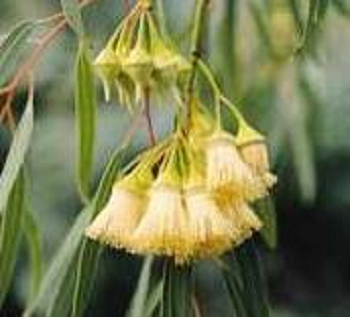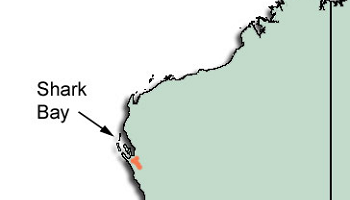Beard’s Mallee

Beard’s Mallee (Eucalyptus beardiana)
What does it look like?
The Beard’s mallee is an attractive gum tree that grows 3–5 m tall. It has several slender trunks covered with smooth, pinkish-grey bark. Its narrow, slightly curved green leaves are 7–12 cm long and its distinctive buds are tapered and beak-like. The tree was named after John Beard, a former Director of both Kings Park Botanical Garden in Perth and Royal Botanic Garden in Sydney, who was the first European to collect specimens of this plant.
Where does it grow?
The tree is endemic to Western Australia – it grows in the wild nowhere else in the world. It is found on red and yellow sands between Shark Bay and Kalbarri. However, it is restricted mainly to Shark Bay’s unique tree heath region, particularly around the southern part of Nanga Station.
Does it flower?
The Beard’s mallee flowers from August to September. Its buds hang down in clusters of up to 11. Each bud sheds its beak-like cap, 1–2 cm long, to reveal creamy-white flowers. Their anthers are partially fused, forming a tubular flower that looks a bit like the skirt of a hula dancer! The mallee is one of only two eucalypt species with this sort of flower. The flowers are pollinated by honeyeaters, which pick up pollen on their face while they probe the flower for nectar. The resulting grey-brown fruits are about 12 mm long, 12 mm wide and cup-shaped, with a thick flat rim and five slender, point-like valves.


Any threats to its survival?
In Western Australia, Beard’s mallee is listed as a rare species, in danger of extinction, and specially protected under the Wildlife Conservation Act. It is recognised nationally as an endangered species. The mallee’s limited range in the tree heath of Shark Bay means it is vulnerable to destruction by fire and grazing animals, especially feral goats, plus land-clearing for agriculture. However, the recent purchase of Nanga Station for conservation purposes will help ensure the plant’s survival.

